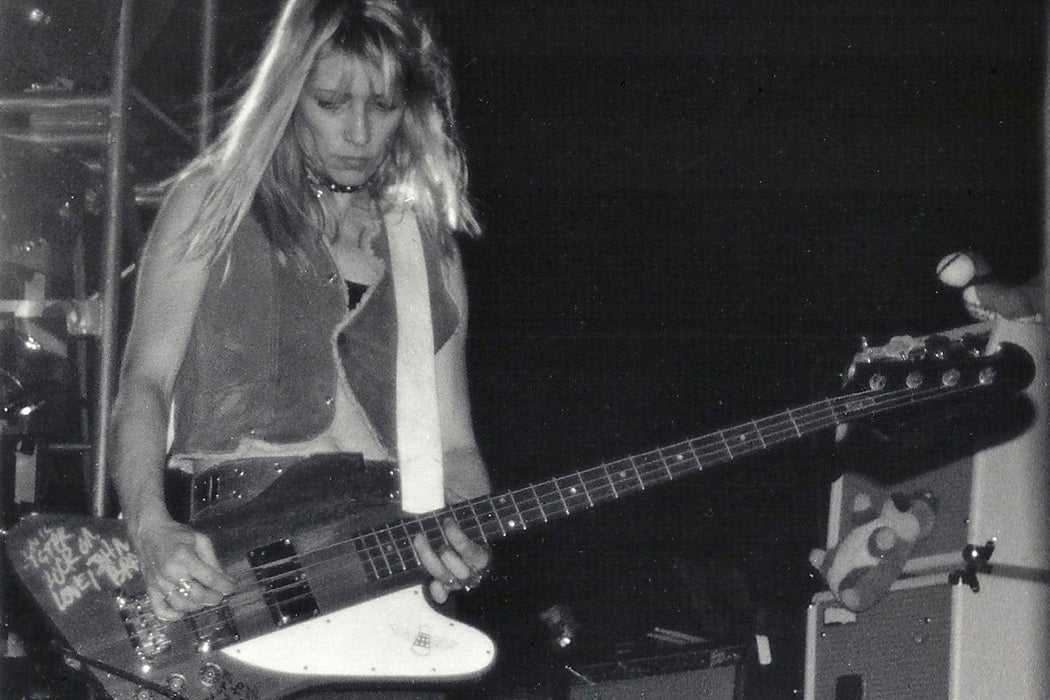A 2018 study found that women make up 50 percent of “all beginner and aspirational guitar players.” And while that might have seemed surprising at the time, maybe it was really a return to roots, to a time when the guitar was seen as a women’s instrument. Though there may be a rise in the number of women buying and playing guitar today, there’s a history of a disproportionate number of women bass guitar players, specifically in rock. As music historian Steve Waksman noted in a 2020 essay, “Much more so than either the drums or the electric guitar, women have filled the bass player’s role in rock.”
As sociologist Mary Ann Clawson writes, though gender plays a role in music, particularly in regard to access, it’s not as if women weren’t always making music. For a long time, they were singers, whether background vocalists or up front.
“Genres such as pop […], and contemporary folk, featuring the self-accompanied singer-songwriter, have served as the principle [sic] sites for the development of women’s artistry,” she writes.
But when it comes to rock bands, the entire band is seen as a creative unit, each making up the whole. And because that whole has long been seen as being made up by instrumentation, “the traditional restriction of women to the role of vocalist, while found in most American pop genres, is especially disempowering in rock music.” It comes down to the idea of sure, she can sing, but can she shred?
Women instrumentalists did make strides in the punk scene with several all-or-predominately-women bands, giving women an opportunity to rock out just like the men. In rejecting the no-girls-allowed rules of rock, these bands were punk in genre and in spirit. For a music “predicated on the spirit of transgression,” Clawson notes, “the very presence of women […] could be a major means of disrupting the cultural status quo.” But those musicians were often the exception. In the punk scene, particularly in the US in the 1980s, women “tended to take the form of women’s minority membership in predominantly male bands.”
In August 1987, Rolling Stone magazine published a critics poll under the heading “The 100 Best Albums of the Last Twenty Years.” Women appeared in fewer than a quarter of the listed bands. That adds up to just fourteen women, with five of them being primarily instrumentalists. Only one bassist was among those five, Tina Weymouth of Talking Heads. But as Kim Gordon, bassist in Sonic Youth once commented, “Somehow in punk rock, girls started playing bass.”
In her study of rock bands, Clawson saw that trend as well. When she looked at a sampling of bands performing in a regional band competition, it supported “the perception that women instrumentalists were disproportionately represented as bass players.” And in her interviews with band members, she also found that perception. As she writes, “the bass [in the 1990s] is in the process of becoming identified as the women’s instrument within the alternative rock band.”
Clawson found that many saw the bass as requiring less skill than other instruments.
“At least one male guitarist expressed a view of the bass as ‘the easiest to play well,’” she notes. And many of those she interviewed “assumed that ease of learning would be especially important for women.”
Though this assumption could be rooted in sexist beliefs, it could also be connected to the age that women start playing instruments, a statistic Clawson’s research confirmed: women start to play rock instruments at a median age of nineteen and join their first band at twenty-one; men start playing at thirteen and join a band soon after they turn fifteen.
Another explanation connects to supply and demand. It would seem that there would be more bass players available because it’s an “easy” instrument to play. However, Clawson found that bass players were in high demand but short supply. One player confirmed this, telling her that “the day I got my bass, I was in two bands.”
Weekly Newsletter
Moreover, the lead guitar is usually seen as the star of the show, while the bass only lends support, another reason why it has been feminized, Clawson notes.
“It is by no means obvious why the bass should be seen as a feminine instrument other than the fact that it is increasingly played by women,” Clawson writes. And as Waksman writes, “Despite the sometimes-stereotyped associations made between the bass and femininity, the instrument has functioned as an essential tool through which women have claimed space in a medium otherwise continually dominated by men.”
That’s all good news for music fans. With more women playing bass, they can look forward to hearing the next generation’s version of Carol Kaye, Kim Deal, and Esperanza Spalding.







